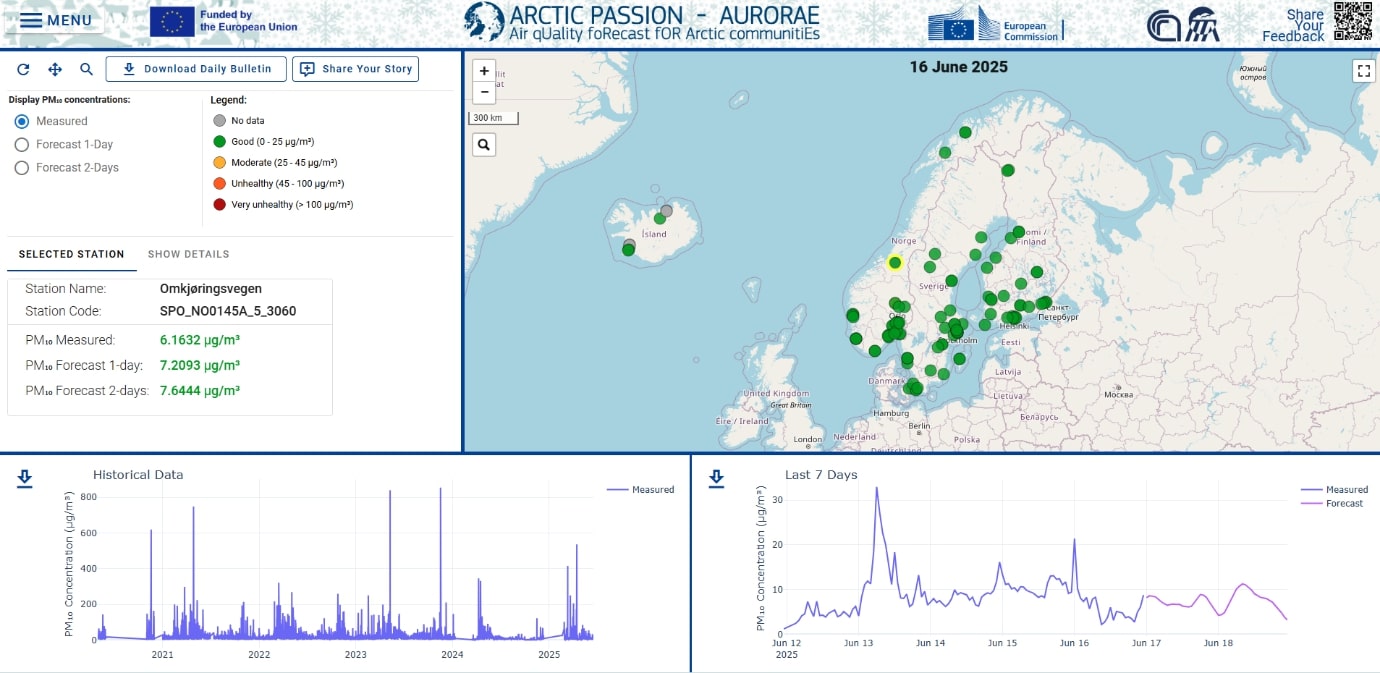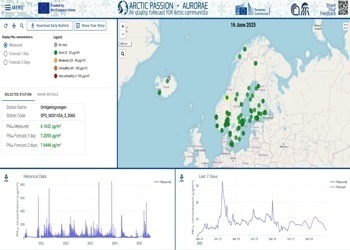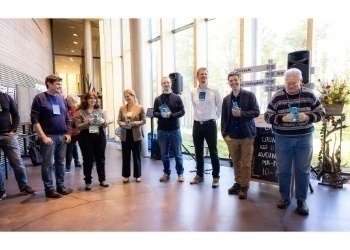AIR QUALITY FORECAST FOR ARCTIC COMMUNITIES (AURORAE) SERVICE
Lead: Srdan Dobricic and Ilaria Crotti, Joint Research Center
AURORAE service
The AURORAE service is a web interface consisting in a visual tool to monitor the air quality of the North European countries on daily basis and to provide a two-day forecast of particulate matter concentrations. The web page is designed for non-scientific users such as communities, stakeholders and citizens. The air pollution near-real-time concentrations and the forecast are visualized on the map as two separate layers, each monitoring station is represented as a dot and depending on its color the air quality is classified from good to unhealthy. In addition, the monitored past trend of air pollution at a selected station and the forecast at hourly resolution can be visualized a separate interactive window. The particulate matter forecast released every day for each station can be downloaded as a txt file and the AURORAE service also provides a daily bulletin reporting the forecast for all the stations to provide a broad overview of air pollution status for all Northern communities.

The pilot version of the AUROAE website

Photo by MonikaP at Pixabay
News highlights

19
Jun, 25Wildfires And Air Quality Forecasting - Services Features & Users Webinars
Arctic PASSION Online Seminar & Dialogue: “Wildfires and Air Quality Forecasting - Services Features & Users' Feedbacks” Recording and Highlights Read More- by: Josefine Lenz
- Updated: 19 Jun 25

25
Jun, 24Arctic PASSION Innovation Exhibition
Arctic PASSION hosted an Innovation Exhibition at our 2024 General Assembly in Inari/Aanaar, Finland in June Read More- by: Sabrina Heerema
- Updated: 25 Jun 24

28
Feb, 24The first showcase of the Air Pollution Forecast service
Ilaria Crotti introduced the ‘Local Atmospheric Pollutant Forecast Service’. Give feedback. Read More- by: Ilaria Crotti
- Updated: 13 Feb 24

02
Feb, 24Arctic PASSION at Arctic Frontiers 2024 recap
An update of Arctic PASSION's presence at the 2024 Arctic Frontiers event Read More- by: Sabrina Heerema
- Updated: 31 Jan 24

22
Jan, 24Arctic PASSION interview with Ilaria Crotti on air pollution forecast service
An interview with Ilaria Crotti, researcher at the EU's Joint Research Centre, on working with development of Arctic PASSION's air pollution forecast service. Read More- by: Sabrina Heerema
- Updated: 22 Jan 24

20
Sep, 23Sharing Circle profile: Ilaria Crotti
Ilaria has been selected for the Arctic PASSION Sharing Circle. Read her profile here Read More- by: Sabrina Heerema
- Updated: 20 Sep 23
